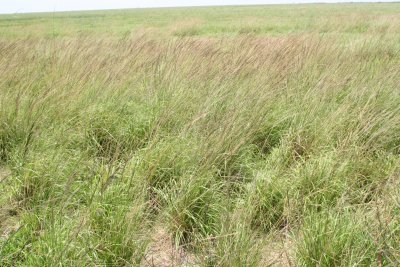Does the Addition of Optima Surfactant Increase Smutgrass Control with Velpar?

Smutgrass is an exotic, invasive perennial grass species that ranchers have been fighting over the last 50 years. Although we had success with control using the herbicides Dowpon in the past and Velpar today, it continues to be a problematic species. In essence, we do not have a management program in place that provides long-term smutgrass management. Additionally, smutgrass control is an expensive venture, costing anywhere from $26 to $36 per acre to control small and giant smutgrass, respectively. We are consistently looking for ways to optimize smutgrass control with Velpar. One possible way is to look at the addition of surfactants to Velpar. Specifically, does the addition of a surfactant to Velpar increase smutgrass control compared to Velpar alone?
Within the past couple of years, we investigated the potential of the surfactant Optima on the activity of Velpar. It has been suggested that Optima increases foliar uptake of Velpar and was the reason for the increased activity.
To determine if this was true, we established an experiment where we applied Velpar at 4 pt/acre without surfactant, with a standard surfactant, and with 0.125, 0.25, 0.5, 0.75, and 1.0% v/v Optima surfactant. This study was conducted near Clewiston in 2005, and has been repeated in 2006 near Ona. In both years, treatments were applied in late June when rainfall became consistent.
We believe that Velpar efficacy is more dependant on application timing than surfactant usage. Therefore, Velpar should only be applied during the rainy season, or when rainfall is sufficient to move the herbicide into the soil so that it is available for root uptake. Most of the activity from Velpar is through root uptake, with little absorbed into the leaves. We believe this is why we observed the results shown in Figure 1. In both years, all Velpar applications that included surfactant were similar to Velpar without surfactant. Therefore, there appears to be no need to add surfactant to Velpar as long as rainfall is sufficient for root uptake of the herbicide. Additionally, adding surfactants will increase application costs as Velpar is an expensive herbicide.
Figure 1. Influence of Optima surfactant on smutgrass control 30 days
after treatment in 2005 and 2006. Data were combined over years. 

